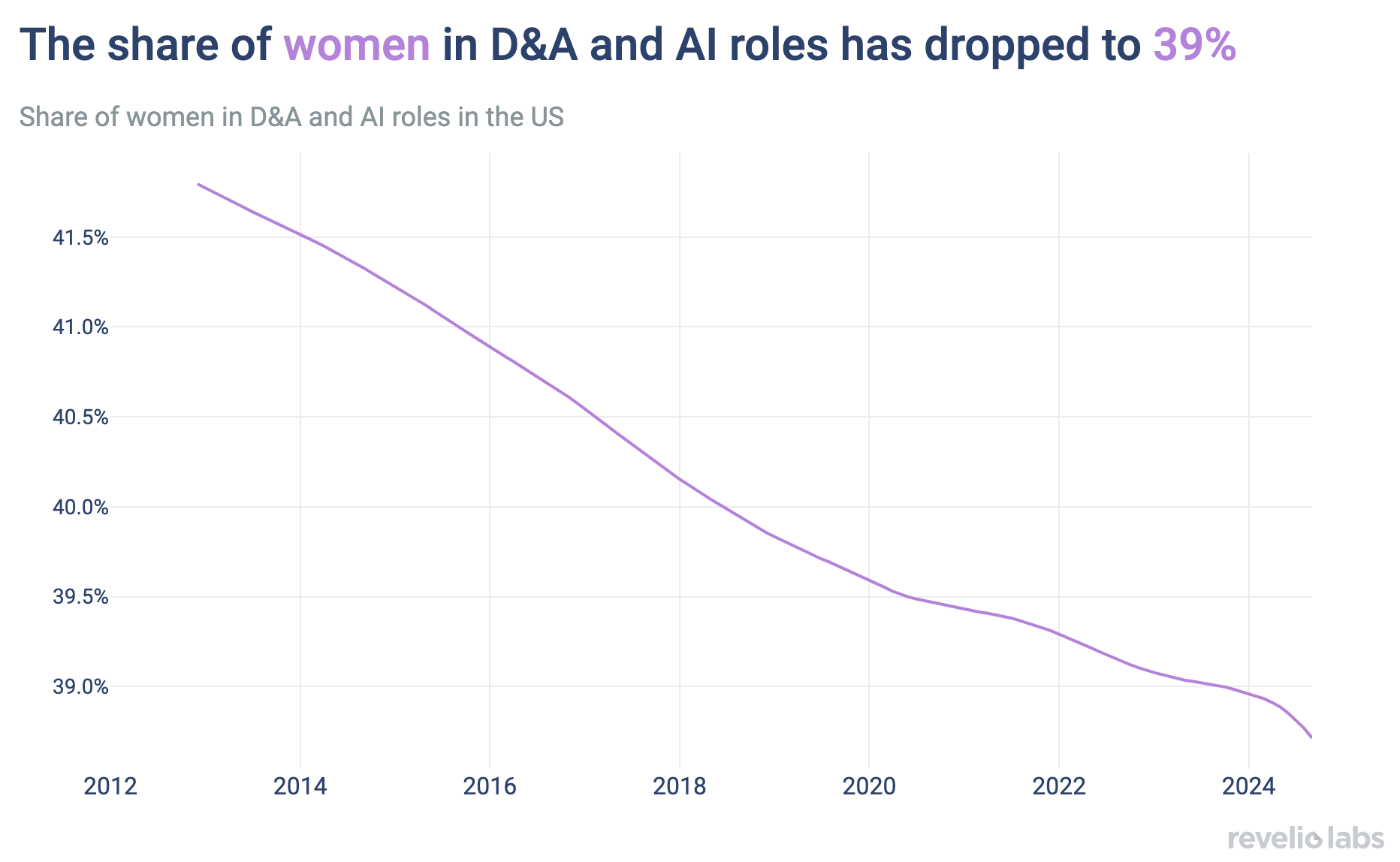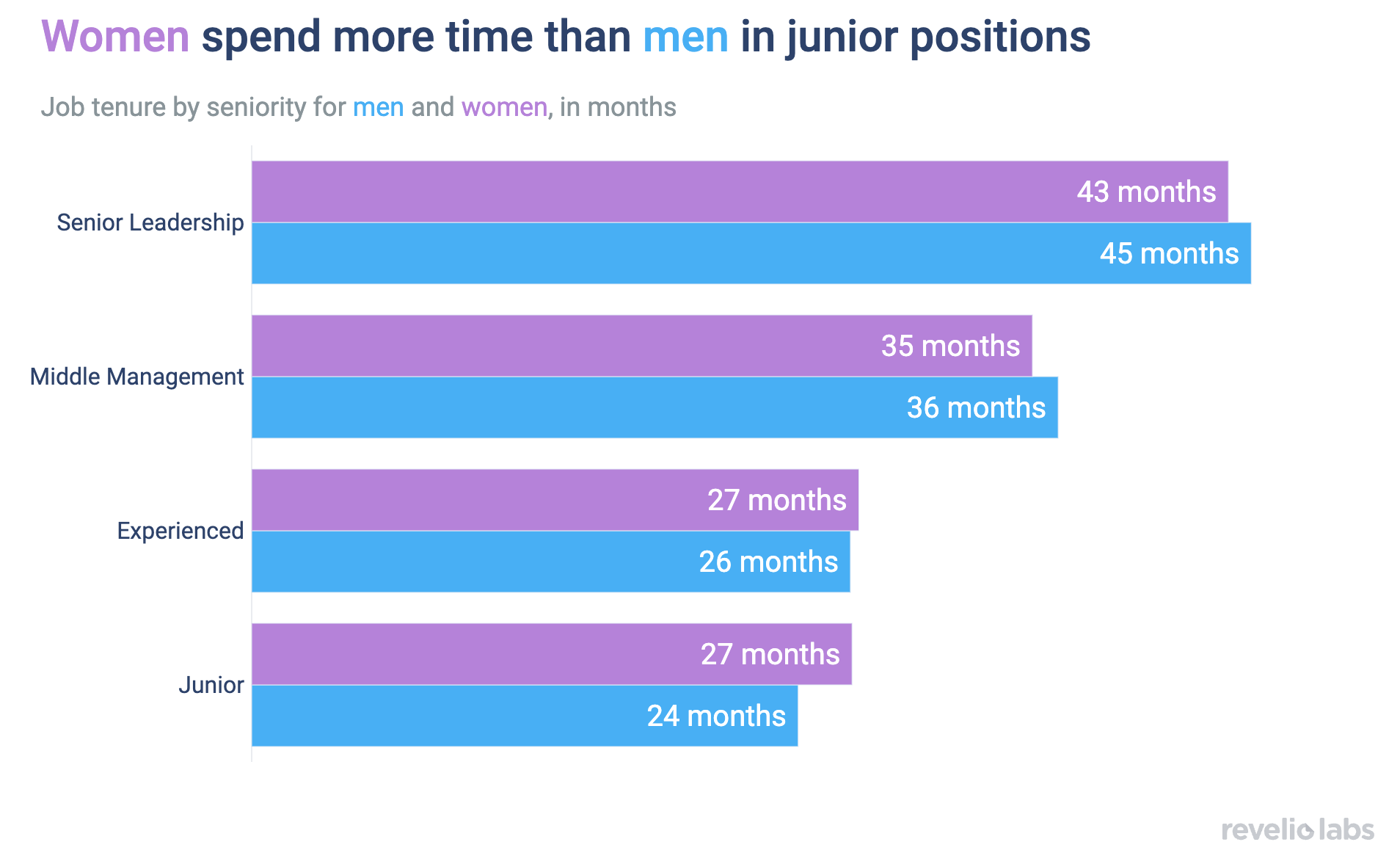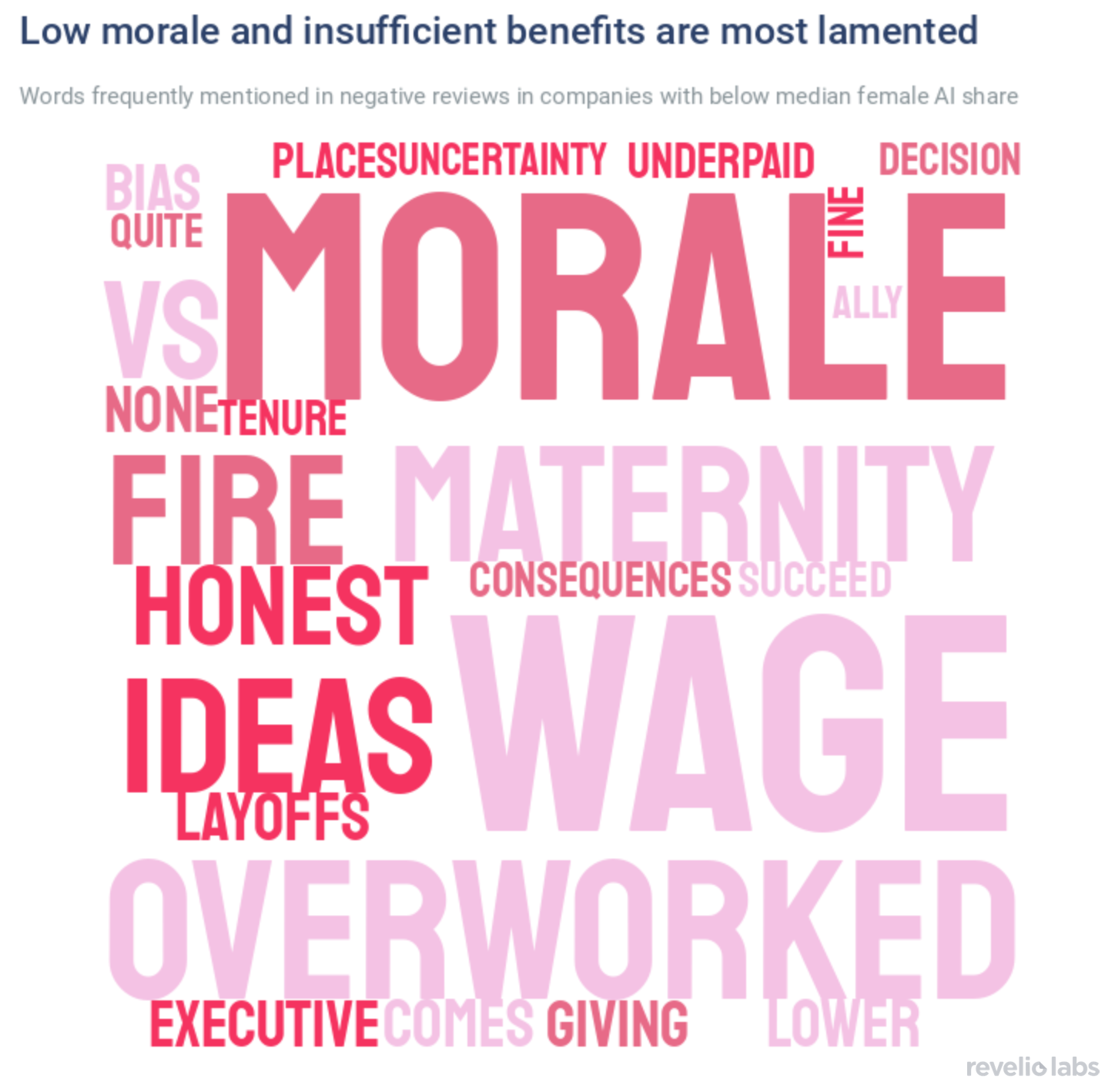The AI Boom Is Here, but Where Are the Women?
KPMG x WLDA x Revelio Labs: Career outlook for women in data, analytics, and AI

The growth in data & analytics (D&A) and AI roles has not been equally distributed between men and women: Women hold only 39% of positions in these roles today, a share that has declined over the past decade.
Representation among women in D&A and AI roles gets worse at higher levels of seniority. While junior roles are closer to gender parity in representation, at executive levels the share of women drops to 29%.
Women spend longer than men in junior roles and are less likely to be promoted. Poor culture, insufficient benefits, and high workloads are often mentioned in places with particularly low female shares in data roles.
Jobs in data & analytics (D&A) and AI have been some of the fastest-growing roles over the past decade in the United States. Between 2008 and 2024, the number of people working in data roles has grown by 63 percent, offering access to some of the highest-paying roles and prestigious companies. However, the growth of these roles has been uneven, with significant disparities between men and women. In collaboration with KPMG and WLDA, we have published Career outlook for women in D&A and AI, A call to action & roadmap for progress, shedding light on the current and past state of women in data roles and mapping out solutions for improvement. Here, we present the highlights from the study, which is powered by Revelio Labs workforce data.
Today, only 39% of D&A and AI roles are held by women, a share that was 3 percentage points higher a decade ago. Women have entered the field at a slower pace than men and are not benefiting equally from the boom in data and AI. Not only are women underrepresented, but they also earn lower salaries compared to men.


Sign up for our newsletter
Our weekly data driven newsletter provides in-depth analysis of workforce trends and news, delivered straight to your inbox!
The pay gap is driven in large part by the uneven representation of women across the corporate ladder. While men and women are almost equally represented in junior roles, the share of women steadily drops at higher levels of seniority. Senior leadership roles in D&A and AI roles hold only 29% women on average. The particularly vexing issue is these shares were all a few percentage points higher a decade ago before the big tech and data boom, indicating that data isn’t an inherently male-dominated field, but rather that some of the progress and equity has been lost in the boom.


The high share of women in junior roles offers hope that the future talent pipeline for senior data positions may improve. However, an examination of promotion rates and time spent at different seniority levels reveals that this is where a significant part of the problem lies. Promotion rates of women from junior to middle management roles are lower than for men, meaning that women spend more time in junior roles. While men spend an average of 24 months in junior roles, it is 3 months longer for women.


The leaky talent pipeline and high attrition rates of women in tech roles are another part of the problem. What leads women to leave their high potential jobs in data? Looking at employee reviews from employees in data roles at companies with below median female shares, we can learn about the working environment in these places. Low morale and overworking are cited as some of the most frequent negatives. Problems of benefits, particularly maternity leave and unjust pay, coupled with mentions of layoffs and biases, paint a picture of toxic work cultures that are not conducive to fostering equitable career opportunities for men and women.

The economics of gender gaps is clear – we cannot hope to achieve pay parity when women continue to be underrepresented in high-paying roles, in particular at senior levels. The fact that the trend is going in the wrong direction and the share of women in D&A and AI roles is shrinking instead of growing causes double reason for concern. Firstly, women are missing out on many of the major growth opportunities presented by the boom in data and AI roles. Secondly, the development of equitable AI tools demands diverse perspectives, yet women—and other underrepresented groups—are being left out of these crucial advancements.
Our study with KPMG and WLDA includes a roadmap of solutions to address the underrepresentation of women. The biggest lever is increasing the number of women in senior leadership positions. This serves to not only strengthen representation but also to provide role models to aspiring junior data professionals. Other avenues include providing allyship to women in data and fostering a better sense of belonging. Finally, expanding the talent pipeline by encouraging women from diverse backgrounds to enter data roles can help increase their representation and participation in the industry’s growth.


